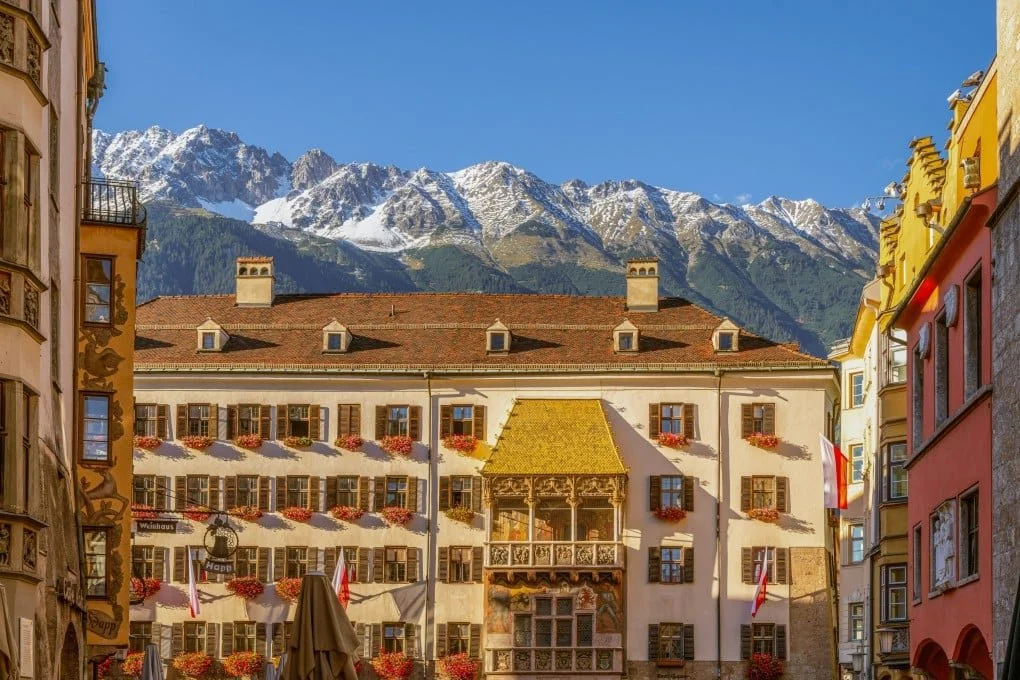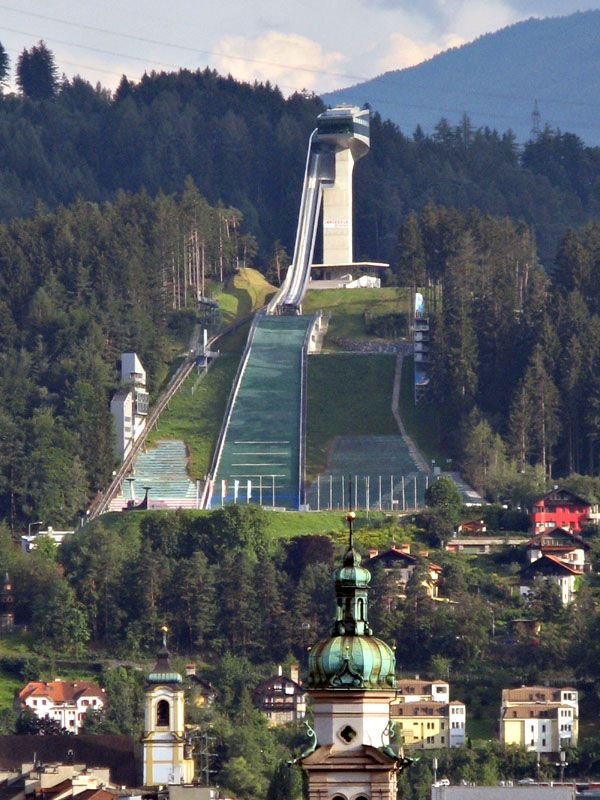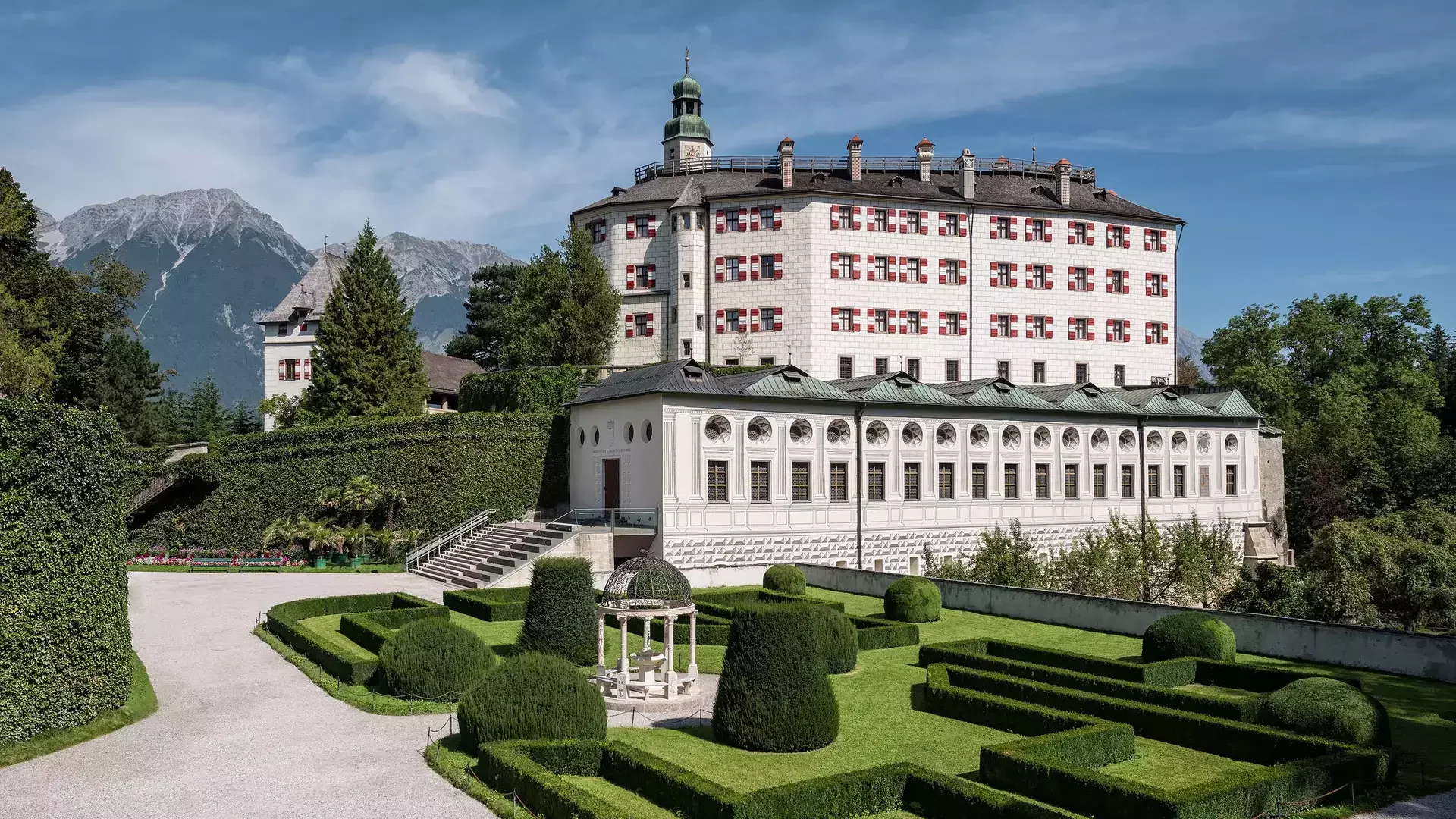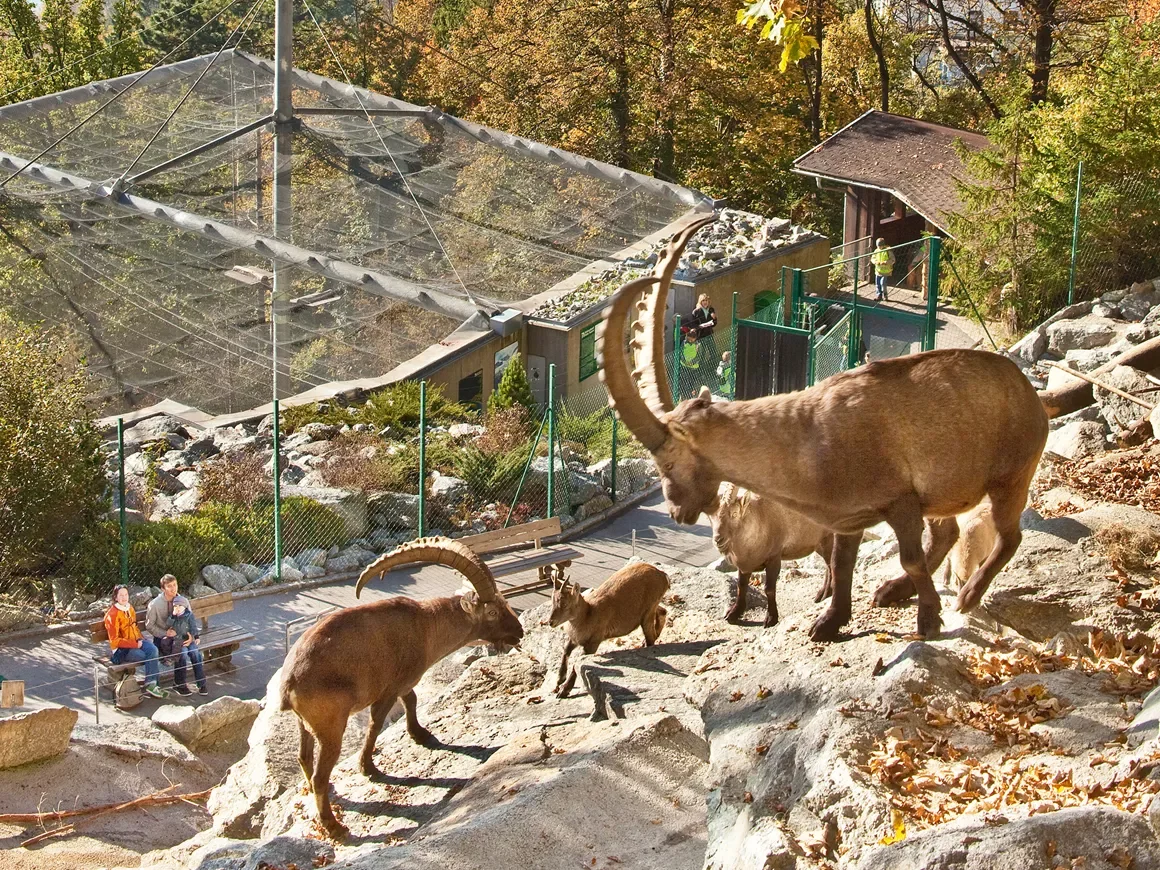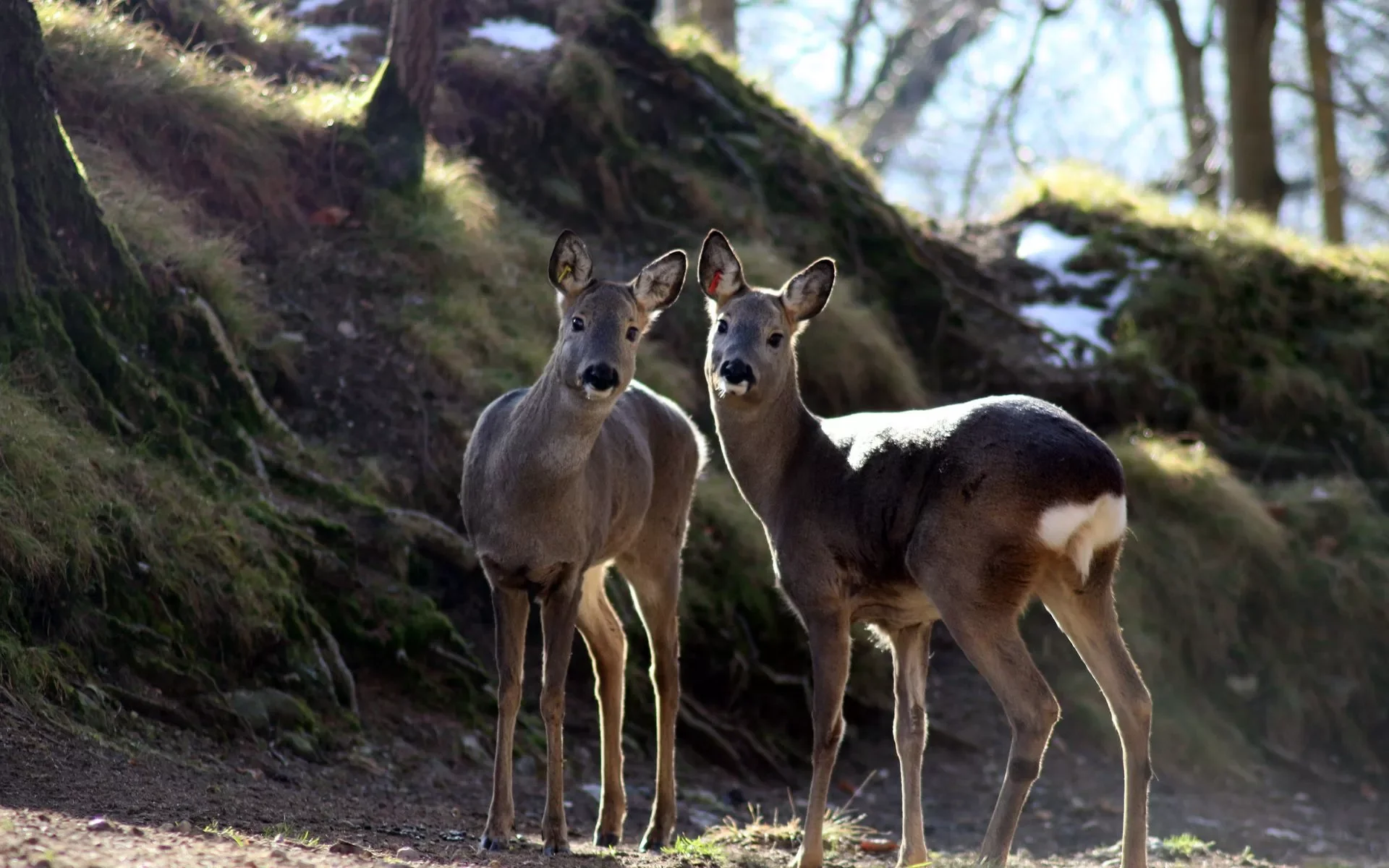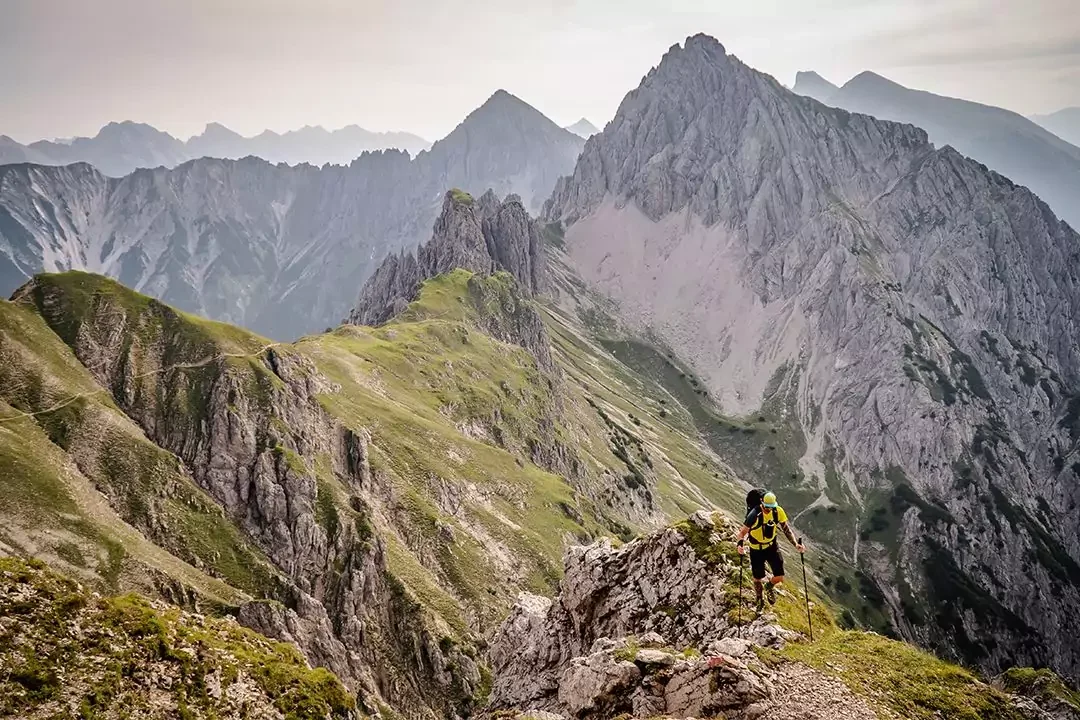Innsbruck & Surrounding
Innsbruck, the capital of Tyrol, is a stunning alpine city surrounded by majestic mountain peaks. Known as the “Capital of the Alps,” it beautifully combines imperial history with a lively, modern atmosphere. The medieval old town charms visitors with its colorful facades, narrow lanes, and the famous Golden Roof. Just minutes away, mountain cable cars whisk you up to breathtaking viewpoints and hiking trails. Innsbruck also has a rich cultural side, with museums, cozy cafés, and traditional Tyrolean cuisine to enjoy. Whether exploring the city or the surrounding Alps, Innsbruck offers guests a perfect blend of culture and nature.
1.Innsbruck Oldtown
Surrounded by snow-capped peaks, Innsbruck’s Old Town is one of Austria’s most charming city centers, where medieval architecture meets alpine flair. Compact and easy to explore on foot, it’s filled with colorful facades, arcaded houses, and lively squares that capture centuries of Tyrolean history.
Highlights: The city’s most famous landmark is the Golden Roof (Goldenes Dachl), a late Gothic balcony decorated with 2,657 gilded copper tiles, built for Emperor Maximilian I. Just around the corner, the Hofkirche houses the emperor’s grand cenotaph, surrounded by 28 larger-than-life bronze statues. Other must-sees include the Imperial Palace (Hofburg), the City Tower with panoramic views, and the charming streets of the Old Town filled with cafés, shops, and traditional inns.
Tips: The Old Town is pedestrian-friendly and best enjoyed slowly – stop for coffee and cake at one of the historic cafés or sample Tyrolean specialties like dumplings and strudel. Many sights are close together, so even a few hours provide a great introduction.
2.Ski Jump
Just south of Innsbruck’s center, the Bergisel hill combines world-class sports architecture with deep Austrian history. It’s home to the striking Bergisel Ski Jump, designed by star architect Zaha Hadid, and the site of the famous Tyrolean battles against Napoleon in 1809.
Highlights: The ski jump is both a training facility and a visitor attraction. An elevator takes you up to the top tower, where a panoramic terrace and café overlook the city and the surrounding Nordkette mountains. Even if no athletes are training, it’s worth visiting for the stunning views and the chance to imagine what it’s like to launch off the jump. At the base of the hill, the Tirol Panorama Museum with its giant circular painting (Riesenrundgemälde) tells the story of the Tyrolean freedom fights led by Andreas Hofer.
Tickets & hours: The ski jump is open daily, admission about €10–12 adults. Combined tickets with the museum are available.
Tips: Take tram line 1 from the city center – it stops right at Bergisel. Visit in the morning for clear views and fewer crowds.
3.Imperial Palace Innsbruck
In the heart of Innsbruck’s Old Town stands the Hofburg, a former Habsburg residence and one of Austria’s most important imperial palaces after Vienna and Schönbrunn. Originally a medieval castle, it was transformed in the 15th century under Emperor Maximilian I and later remodeled in baroque style by Empress Maria Theresa.
Highlights: Visitors can tour the richly decorated Imperial Apartments, including the Giant’s Hall (Riesensaal) with its dazzling frescoes, chandeliers, and portraits of Maria Theresa’s 16 children. Exhibitions highlight the life and legacy of Empress Elisabeth (Sisi), Tyrol’s history, and the Habsburg dynasty’s connection to Innsbruck. The palace also features ornate chapels, staterooms, and collections of art and furniture spanning centuries.
Tickets & hours: Open daily, usually 9:00–17:00. Admission is about €9–10 for adults, with concessions and family tickets available.
Tips: Allow at least an hour to explore the apartments and exhibitions. Combine your visit with nearby attractions such as the Hofkirche and the Golden Roof – all just steps away in Innsbruck’s Old Town.
Set on a hillside overlooking Innsbruck, Ambras Castle (Schloss Ambras) is one of Austria’s most important Renaissance landmarks. It was transformed in the 16th century by Archduke Ferdinand II, who turned it into both a residence and a showcase for his extraordinary collections.
Highlights: The Upper Castle houses Ferdinand’s famous Chamber of Art and Curiosities (Kunst- und Wunderkammer), filled with unusual objects, scientific instruments, armor, and exotic treasures from around the world. The Spanish Hall, one of Europe’s most beautiful Renaissance halls, is adorned with portraits of Tyrolean rulers. The Lower Castle contains the impressive Armory, displaying suits of armor and weapons, as well as portraits of Habsburg rulers. Surrounding the castle are tranquil gardens and a park with ponds and peacocks.
Tickets & hours: Open daily from April–October (10:00–17:00) and closed on Tuesdays in winter. Admission is about €12–13 adults, with concessions available.
Tips: Easily reached by tram or bus from Innsbruck’s center in about 15 minutes. Allow 2–3 hours to enjoy both the collections and the gardens.
4.Castle Ambras
5.Alpine Zoo
Perched on the slopes of the Nordkette mountains, the Alpenzoo Innsbruck is the highest-altitude zoo in Europe (750 m) and a fun, educational stop for families and nature lovers. It’s dedicated to the wildlife of the Alpine region and gives visitors the chance to see animals that are rarely spotted in the wild.
Highlights: The zoo is home to more than 150 species and 2,000 animals, including ibex, marmots, lynx, bears, wolves, and golden eagles. Aquariums and terrariums showcase Alpine fish, amphibians, and reptiles, while large outdoor enclosures provide natural habitats with spectacular mountain views. Children especially enjoy the petting zoo and playground.
Tickets & hours: Open daily year-round, generally 9:00–18:00 in summer and 9:00–17:00 in winter. Admission is about €12 for adults, with discounts for children, families, and students.
Tips: The zoo is directly accessible by the Hungerburg funicular, which links Innsbruck’s Old Town with the Nordkette cable car. Combine a visit to the Alpenzoo with a trip up the mountain for a full day of alpine adventure.
About 20 km east of Innsbruck, the Swarovski Crystal Worlds (Swarovski Kristallwelten) in Wattens is one of Austria’s most dazzling attractions. Opened in 1995 to celebrate the centenary of the Swarovski company, it combines art, design, and fantasy in a sparkling experience.
Highlights: Visitors enter through the iconic giant’s head, whose mouth is a fountain, leading into the underground Chambers of Wonder. These immersive rooms, designed by international artists, use light, mirrors, and crystals to create magical worlds. Outside, the expansive garden features contemporary sculptures, a mirror pool, and the whimsical Crystal Cloud made of 800,000 floating crystals. Children love the play tower and outdoor playground, making it an ideal family outing.
Tickets & hours: Open daily, usually 9:00–19:00. Admission is about €23 for adults, with discounts for children and families.
Getting there: Wattens is a 20–25 minute drive from Innsbruck. Alternatively, a dedicated shuttle bus runs several times a day from Innsbruck’s main train station directly to the entrance. Public buses also connect Innsbruck with Wattens in around 40 minutes.
Tips: Allow 2–3 hours to explore both indoors and outdoors. The on-site Swarovski shop offers exclusive crystal designs.
6.Swarovski Crystal Worlds
7.Castle Hasegg
In the medieval town of Hall in Tirol, just 10 km from Innsbruck, stands Castle Hasegg, famous as the birthplace of the modern silver coin – the thaler, which gave its name to the “dollar.” Today the castle houses the fascinating Mint Museum (Münze Hall), where visitors can explore the history of money and minting.
Highlights: The museum showcases historic minting machines, coins, and the story of how Hall became one of Europe’s most important mints in the 16th century. A highlight is the massive roller coining machine, unique in the world. Visitors can also strike their own souvenir coin. Climbing the Mint Tower (Münzerturm) rewards you with panoramic views over Hall’s Old Town and the Inn Valley.
Tickets & hours: Open Tuesday–Sunday, usually 10:00–17:00. Admission is about €12 for adults, with concessions for families and students.
Getting there: Hall in Tirol is a 15-minute drive from Innsbruck or just 10 minutes by train.
8.Nordkette
Known as the “Jewel of the Alps”, the Nordkette mountain range rises directly above Innsbruck and is part of the Karwendel Nature Park. With its easy access, it’s the perfect place to experience the high Alps without leaving the city.
Highlights: The journey itself is spectacular: the modern Hungerburg funicular, designed by Zaha Hadid, departs from Innsbruck’s Old Town and connects to cable cars leading up to Seegrube (1,905 m) and finally the Hafelekar peak (2,300 m). From the top, you’ll enjoy breathtaking views of Innsbruck on one side and the rugged Karwendel mountains on the other. In summer, hiking and climbing routes start right at the stations, while in winter the area becomes a ski resort. At Seegrube, a panoramic restaurant and sun terrace invite you to linger.
Tickets & hours: Open year-round, with cable cars running roughly 8:30–17:00. A round trip to Hafelekar costs about €40 for adults.
Tips: Bring a jacket – even in summer it can be chilly at the summit. Combine with a visit to the Alpenzoo, located right along the funicular route.
9.Karwendel
The Karwendel Mountains form Austria’s largest nature reserve and rise just behind Innsbruck, offering pristine alpine landscapes of rugged limestone peaks, deep valleys, and untouched wilderness. Covering more than 700 km², the Karwendel Nature Park is a paradise for hikers, climbers, and nature lovers.
Highlights: Well-marked trails range from gentle valley walks to challenging alpine routes. Popular destinations include the Goetheweg, a panoramic path along the ridge from the Nordkette to the Hafelekar, and the hike to the Karwendelhaus mountain hut, a classic stop for trekkers. Wildlife enthusiasts may spot golden eagles, chamois, marmots, and even ibex. In winter, the quieter valleys offer opportunities for ski touring and snowshoeing.
Getting there: The Karwendel is directly accessible from Innsbruck via the Nordkette cable cars, which bring you right into the mountains. Other entry points include the Achensee region and the Isar Valley near Mittenwald (Germany).
Tips: Always bring sturdy footwear and check weather forecasts – the Karwendel is wilder and less developed than many Alpine regions.
10.Lakes around Innsbruck
While Innsbruck is best known for its mountains, the region also offers several beautiful alpine lakes that are perfect for swimming, relaxing, or enjoying scenic walks. Just a short drive or bus ride from the city, they provide a refreshing contrast to the urban and alpine sights.
Natterer See: Only 10 minutes from Innsbruck, this small lake is popular with families thanks to its swimming area, water slides, and camping facilities.
Lanser See: A charming forest lake near Igls, ideal for a peaceful swim on summer days. Sunbathing lawns and a lakeside restaurant make it a relaxing spot.
Mieminger Plateau Lakes: The Badesee Mieming offers swimming with views of the Mieminger Range – a true local favorite.
Achensee: About 45 minutes from Innsbruck, Tyrol’s largest lake is framed by the Karwendel and Rofan mountains. It’s famous for turquoise waters, boat trips, and hiking trails along the shore.
Tips: Most lakes are easily reached by car or regional bus. In summer, arrive early to secure a good spot, as many bathing areas are small and fill quickly.


